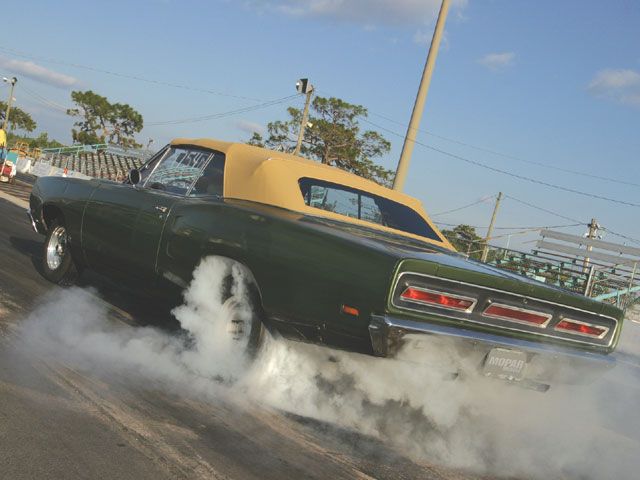
Throwing The GauntletIt all began with a phone call from Detroit Locker, "Hey, we have this new limited-slip differential that's virtually indestructible." never one to back away from a challenge, our attention was piqued. We thought out loud, "yeah sure, I bet you we can break it." When the voice on the other end asked if we wanted to try, we offered our demolition services. In the past, we have never "tried" to bust parts, but it always seemed to happen at the most inopportune moment. Usually during eliminations, but that's the way it goes.
Anyway, we took the bait and decided to see what new-and-improved differential Detroit Locker was offering, and if it could survive a couple of backyard racers' abuse. When the differential arrived, it looked like a really sturdy unit, but we would withhold judgment until we actually abused . . . er, tested it.
Gearing UpThe Detroit Truetrac differential is the first gear-type limited-slip differential in the industry. The patented design of parallel-axis planetary helical-gears provides a quiet, automatic splitting of torque. Power transfer goes unnoticed by the driver. The Detroit Truetrac performs like an open differential under normal driving conditions, and automatically transfers torque to the wheel with better traction when ground conditions warrant the extra traction. The limited slip responds instantly to torque feedback anytime, at any speed. Detroit Locker is known for their locking differentials, but this is a limited-slip differential.
During our conversation with Detroit Locker, they mentioned the axles would give out before the differential did. "Oh really, what if we used a set of aftermarket axles and gears?" we asked. "Give it your best shot," was the reply.
Properly ShaftedSince Detroit Locker told us their Truetrac differential wouldn't break during our testing, we decided we better get a good set of gears and axles to make the rearend virtually bulletproof. Moser engineering has been building high-strength axles for a loooong time, so they know what they're doing. When we told them that Detroit Locker said the car's stock axles would break before the differential, their reply was, "let's make sure that doesn't happen." So we had Moser install a set of 4.30 gears on the Truetrac differential in our 831/44 rear; they also supplied a pair of axles. We realized that we might not be able to break this thing, but that didn't mean we weren't going to try.
Abusing...er, Testing Day(s)We knew that placing these parts in a rearend that was going into a stock six-cylinder Dart would not be the best way to see how well this stuff performed and survived, but Dave Young, our new tech editor, has a big, heavy, B-Body convertible Coronet with an even larger stroked big-block. We planned on driving the 15 miles to Lakeland Motorsports Park on the slicks, but figured with our luck we'd get busted. this was one of those rare moments when common sense kicked in, and we trailered the Coronet to the track.
On our first outing, it became apparent that nothing was going to happen. The skies opened, and the rain came down. We would have to wait another day. When we did get a chance to get back to the track, the weather was nice, and track was ready, so we headed for the staging lanes. After heating up the ET Drag slicks, we lined up and got ready for the moment of truth. When the lights came down, Dave launched the Coronet and right out of the box got a 1.74 60-foot time. Not bad for a big car considering it has worn-out shocks, and we are quite certain there was a lot of flexing going on with no subframe connectors or body stiffening aids. addressing those issues is next on the list. For now, since we are certain we put everything in place and tightened the bolts, it was time to let it all hang out. We decided to make a couple round-robin laps since we were just about the only ones there. the car consistently made 60-foot times in the 1.74-1.80. The 60-foot times varied because we were trying different tire pressures, ranging from 13 to 18 psi. We ran back-to-back runs for a few hours, and the only time we stopped was to change tire pressures. Our best 60-foot times came with 18 psi in the Mickey Thompson slicks.
Well, we tried to break something, and it didn't happen. All we can say is, that's a testament to the durability of the new Truetrac and the Moser parts we abused . . . er, we mean tested.